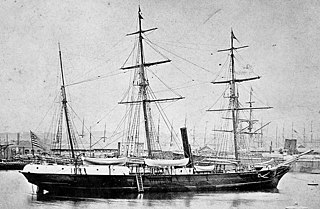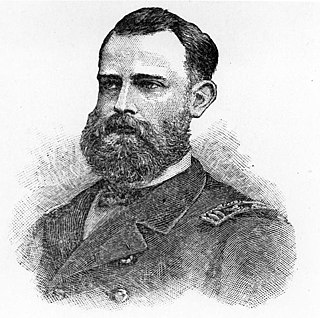Statute
"Be it enacted by the Senate and House of Representatives of the United States of America in Congress assembled, That the President be, and hereby is, authorized, by and with the advice and consent of the Senate, to advance Chief Engineer George Wallace Melville, United States Navy, one grade, to take rank from the same date but next after the junior chief engineer having the relative rank of commander at the passage of this act, as a recognition of his meritorious services in successfully directing the party under his command after the wreck of the Arctic exploring steamer Jeannette, and of his persistent efforts through dangers and hardships to find and assist his commanding officer and other members of the expedition before he himself was out of peril; and that he be allowed the pay of a chief engineer as if he had been commissioned on the same date as the junior chief engineer having the relative rank of commander at the passage of this act; such increased rate of pay to begin from the date of the passage of this act."
"That the said Melville shall hereafter continue to be next junior to the junior chief engineer having the relative rank of commander at the passage of this act; and whatever grade he may hereafter occupy shall be increased by one number, but the total number of chief engineers shall not be increased: Provided, That nothing in this act shall cause any officer to be retarded in his promotion or receive a less rate of pay than would otherwise have been the case."
"That suitable medals be struck at the United States Mint in commemoration of the perils encountered by the officers and men of the said Jeannette Arctic Expedition, and as an expression of the high esteem in which Congress holds their services in the said expedition; and that one of the said medals be presented to each of the survivors of said expedition, and one to the heirs of each of the deceased members."
"That a sufficient sum for the purposes of this act is hereby appropriated out of any money in the Treasury not otherwise appropriated."

George Washington De Long was a United States Navy officer and explorer who led the ill-fated Jeannette expedition of 1879–1881, in search of the Open Polar Sea.

Admiral of the Navy was the highest-possible rank in the United States Navy, prior to the creation of fleet admiral in 1944. The rank is considered to be at least equivalent to that of a five-star admiral, with Admiral George Dewey being the only officer to be appointed to the rank.

USSJeannette was a naval exploration vessel which, commanded by George W. De Long, undertook the Jeannette expedition of 1879–1881 to the Arctic. After being trapped in the ice and drifting for almost two years, the ship and her crew of 33 were released from the ice, then trapped again, crushed and sunk some 300 nautical miles north of the Siberian coast. The entire crew survived the sinking, but eight died while sailing towards land in a small cutter. The others reached Siberia, but 12 subsequently perished in the Lena Delta, including De Long.

George Wallace Melville was a United States Navy officer, engineer and Arctic explorer.

Adolphus Washington Greely was a United States Army officer and polar explorer. He attained the rank of major general and was a recipient of the Medal of Honor.
The Treaty of Mendota was signed in Mendota, Minnesota, on August 5, 1851, between the United States federal government and the Mdewakanton and Wahpekute Dakota people of Minnesota.

The Confiscation Act of 1861 was an act of Congress during the early months of the American Civil War permitting military confiscation and subsequent court proceedings for any property being used to support the Confederate independence effort, including slaves.
A commission is a formal document issued to appoint a named person to high office or as a commissioned officer in a territory's armed forces. A commission constitutes documentary authority that the person named is vested with the powers of that office and is empowered to execute official acts. A commission often takes the form of letters patent.

John Wilson Danenhower was a United States Navy officer best known for his participation in the Jeannette expedition.

A Congressional Silver Medal is an award bestowed by the United States Congress. They have been made in either non-portable or decoration form.

The surgeon general of the Navy (SGN) is the most senior commissioned officer of the Medical Corps of the United States Navy and is the principal advisor to the United States Secretary of the Navy, Chief of Naval Operations and director of the Defense Health Agency on all health and medical matters pertaining to the United States Navy and United States Marine Corps. As head of the Bureau of Medicine and Surgery, the surgeon general also manages Navy and Marine healthcare policy, administering the services' healthcare and biomedical research facilities as well as the various staff corps of BUMED, including the Medical Corps and an enlisted corps. The surgeon general is also a member of the Office of the Chief of Naval Operations.

Charles Winans Chipp was a United States Navy officer and explorer.
The New Mexican Railway Company was incorporated in the Territorial Legislature of New Mexico on Feb 2, 1860, prior to the beginning of the American Civil War. Corporate members were Henry Connelly, Antonio J. Otero, who served as a justice of the New Mexico Territorial Supreme Court; Ambrosio Armijo ; José Felipe Chavez, Francisco Chavez; Spruce M. Baird, a judge sent by Texas during the U.S. provisional government of New Mexico to organize their claimed land east of the Rio Grande as the Santa Fe county of Texas; Francisco Perea, José Leandro Perea, who was the uncle of Francisco, Charles B. Clark, José Guadalupe Gallegos, Stephen Boice, William H. Moore, Ceran St. Vrain, Thomas C. de Baca, Merrill Ashurst, Duff Green, John Titus, David R. Porter, Oliver W. Barney, and Philip L. Fox. The Memorial of the New Mexican Railway Company, in Relation to the Pacific Railroad was introduced by Miguel Antonio Otero in the United States Congress on May 21, 1860. It was an argument in favor of the southern route for a transcontinental railroad. Arguments over the central vs. southern route were a part of the complex of insoluble relations between states, dating back to James Gadsden's involvement in 1845. These arguments contributed to the outbreak of the American Civil War. The New Mexican Railway Company was formed in conjunction with the attempt to retain rights of in-state railroad construction oversight within the Territorial government. The act of incorporation stated that company rights and privileges would be forfeited if construction had not begun within a period of five years. Beginning in 1862, after the outbreak of Civil War, the Union Pacific Railroad and the Central Pacific Railroad of California were granted lands and construction privileges for the First transcontinental railroad project under the Pacific Railway Acts. Construction of this Overland Route was begun in 1863 and completed in 1869. The southern route did not become a reality until 1883, when the Southern Pacific Railroad linked New Orleans and the Gulf of Mexico with Los Angeles and the Pacific Ocean.

An Organic Act is a generic name for a statute used by the United States Congress to describe a territory, in anticipation of being admitted to the Union as a state. Because of Oklahoma's unique history an explanation of the Oklahoma Organic Act needs a historic perspective. In general, the Oklahoma Organic Act may be viewed as one of a series of legislative acts, from the time of Reconstruction, enacted by Congress in preparation for the creation of a united State of Oklahoma. The Organic Act created Oklahoma Territory, and Indian Territory that were Organized incorporated territories of the United States out of the old "unorganized" Indian Territory. The Oklahoma Organic Act was one of several acts whose intent was the assimilation of the tribes in Oklahoma and Indian Territories through the elimination of tribes' communal ownership of property.

William Frederick Carl Nindemann was a German-born American Arctic explorer and recipient of the Congressional Silver Jeannette Medal.

The Jeannette Monument is the largest monument in the United States Naval Academy Cemetery. It memorializes the 1881 loss of USS Jeannette while exploring the Arctic ice. Jeannette, with a crew of 33, collapsed and sank under surging ice in the summer of 1881. Her crew, commanded by George W. DeLong, took to the ice dragging three small boats. When open water was found, the boats were used to sail to the Lena Delta of Siberia, 700 miles distant. DeLong commanded a boat of 14 total crew members, Executive Officer Charles W. Chipp's boat's crew was 8 total crew members, and Engineer Officer George W. Melville's boat had 11. Chipp's boat was lost at sea with all hands. Engineer Melville's boat landed in the southern delta, and DeLong's boat came ashore farther to the north on 17 September 1881. Melville quickly found aid, as did the two hardiest sailors of DeLong's crew soon after. The 12 remaining, including DeLong, perished from starvation or exposure. Thus 20 of the original 33 did not survive the expedition.

In The Kingdom of Ice: The Grand and Terrible Polar Voyage of the USS Jeannette (Doubleday), 2014, is a nonfiction book written by the author and historian Hampton Sides. The book tells the true story of the 1879–1881 arctic voyage of the USS Jeannette and the crew's struggle to survive after having to abandon their ship in the polar ice.

The Jeannetteexpedition of 1879–1881, officially called the U.S. Arctic Expedition, was an attempt led by George W. De Long to reach the North Pole by pioneering a route from the Pacific Ocean through the Bering Strait. The premise was that a temperate current, the Kuro Siwo, flowed northwards into the strait, providing a gateway to the hypothesized Open Polar Sea and thus to the pole.

The Marriage of Lunatics Act 1811 was an Act of Parliament of the United Kingdom implemented under the reign of George III of Great Britain. It was intended "to prevent the marriage of Lunatics" and make all marriages to Lunatics prior to and after the bill, whether diagnosed before marriage or otherwise, "null and void to all intents and purposes whatsoever".

James Markham Marshall Ambler was an American naval surgeon who served on the USS Jeannette and perished during the Jeannette expedition, in 1881, while attempting to reach the North Pole.















